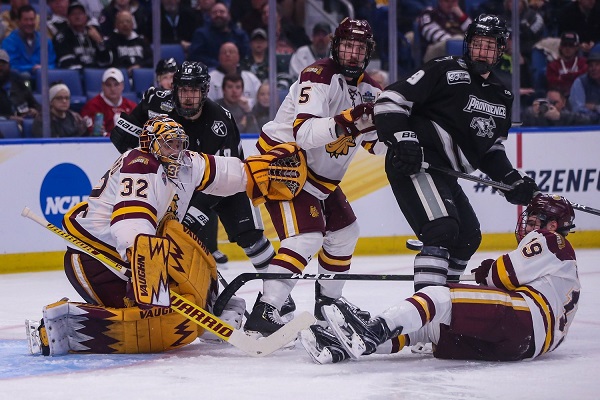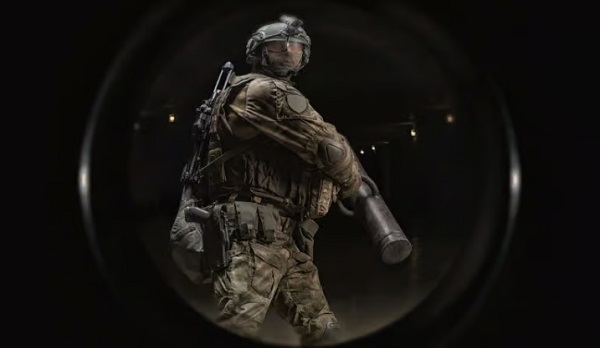Opinion
A PANACEA: is what Red Deer’s Riverlands is not.
Definition of panacea. : a remedy for all ills or difficulties : cure-all.
The Riverlands is often being touted as the cure-all for our city’s ills. It will bring businesses to Red Deer. It will stem the exodus of our residents, reversing the decline in population. It will put Red Deer on the map. It will bring people downtown.
23 acres will save Red Deer from it’s current decline, it may help, but only if seen as a portion of the solution.
Concentrating on one area of Red Deer is detrimental to other areas in Red Deer. Pulling businesses from the north side to downtown will only hurt the north side businesses that cannot move downtown, like Parkland Mall. It punishes the residents who live on the north side because they will have to travel further to do business.
The city will say that the Riverlands will allow residents to live, work and recreate in their neighbourhoods. But that is not important, if you live north of the river.
The North is not some enemy, some disease that needs to be fought or contained. Why not allow one third of our city to live, work and recreate in their neighbourhood? You also determined that there should be an indoor ice rink for every 15,000 people. Apparently that also does not apply, north of the river. They have 1 for every 30,000 residents while the south side has 1 for every 10,000 residents.
The city will not plan for a high school or another swimming pool north of the river even though they expect the population will hit 55,000 residents. What family will plan on moving to the north side if they see that they will have to commute across the city for every necessity of life, like going to high school?
The Riverlands, will be a nice extra, but it is not a nice necessity, and that is where the city is failing. The money that went into re-aligning the traffic, could have paid for a high school for the north side communities. Investing in sports tourism, incorporating areas like Hazlett Lake. Building a competitive aquatic centre might attract more tourism dollars than a 20 million dollar footbridge for Riverlands residents.
The problem is that the city has blinders on when it comes to the downtown. A restaurant owner moved out of downtown, because he felt that he was out of the small group that controlled the decision making for downtown. He moved to the outer suburbia, or enemy territory.
He, like myself may be dismissed as cantankerous old men, ignored by the media and decision makers. But if one was to take all the symptoms, the trends, and events together and try to establish a commonality, then we might agree and find a way to reverse this decline.
Businesses leaving, 975 residents moved out of Red Deer, 777 residents moved out of the north side of the river, increasing unemployment, 10% vacancies, increasing crime, and bad air, will not end because the Riverlands is being developed.
There is no panacea, perhaps it is time to reconsider other options, too. Let us start listening, seriously, to a larger group. Find out why Blackfalds grew by 700 residents while Red Deer shrank by 975? Why is Gasoline Alley becoming a powerhouse while our downtown needs subsidization?
In 1970s, Parkland Mall made Red Deer a shopping destination for Central Alberta, 40% of the population lived north of the river, then we abandoned the north. The last school was built in 1985, the last indoor ice rink and pool was built in the 1980s, now they are neglected still 3 decades later. Only 30% live north of the river, today.
Could this have contributed to the decline of Red Deer? Possibly but no one wants to talk about it. Perhaps it is time we did? Maybe, being nice, ignoring the problems and putting all our eggs in the downtown basket, is not part of the solution but is part of the problem?
Forget the idea of a panacea, and start a real discussion, and the real solutions might see some daylight. Time to take the blinders off. Thank you.
Bruce Dowbiggin
CHL Vs NCAA: Finally Some Sanity For Hockey Families

In forty-years-plus of covering sports you develop hobby horses. Issues that re-appear continuously over time. In our case, one of those issues has been pro hockey’s development model and the NCAA’s draconian rules for its participants. Which was better, and why couldn’t the sides reach a more reasonable model?
In the case of hockey the NCAA’s ban on any player who played a single game in the Canadian Hockey League created a harsh dilemma for hockey prodigies in Canada and the U.S. Throw your lot in with the CHL, hoping to be drafted by the NHL, or play in a secondary league like the USHL till you were eligible for the NCAA. Prospects in the CHL’s three leagues — the OHL, QMJHL and WHL —were classified as professional by the NCAA because they get $600 a month for living expenses, losing Division I eligibility after 48 hours of training camp. The stipend isn’t considered income for personal tax purposes.”
Over the decades we’ve spoken with many parents and players trying to parse this equation. It was a heartbreaking scene when they gambled on a CHL career that gave them no life skills or education. Or the promised NCAA golden goose never appeared after playing in a lower league for prime development years.
There were tradeoffs. NCAA teams played fewer games, CHL teams played a pro-like schedule. The NCAA awarded scholarships (which could be withdrawn) while the CHL created scholarships for after a career in the league (rules that players getting NHL contracts lost those scholarships has been withdrawn). There were more contrasts.
As we wrote here in 2021, it might have stayed this way but for a tsunami created by the antitrust issue of Name Image Likeness for NCAA players who were not paid for the use of their NIL. When the U.S. Supreme Court ruled on the issue in 2015 it warned the NCAA that its shamateurism scheme had to change. That created revolution in the NCAA. Athletes now receive healthy compensation for their image in video and digital products. They can also take million-dollar compensation from sponsors and boosters.
Portals allow them to skip from team to team to find millions in compensation. One of the many changes in the new NCAA was its prohibition against CHL players. To forestall future lawsuits costing millions, it recently made hockey players eligible for the same revenues as football and basketball players. Now the NCAA has voted to open up college hockey eligibility to CHL players effective Aug. 1, 2025, paving the way for major junior players to participate in the 2025-26 men’s college hockey season.
Which, we wrote in 2022, would leave hockey’s development model vulnerable. “As one insider told us, “The CHL model should be disrupted. Archaic and abusive.” NIL won’t kill the CHL but it could strip away a significant portion of its older stars who choose guaranteed money over long bus rides and billeting with other players. It’s early days, of course, but be prepared for an NHL No. 1 draft pick being a millionaire before his name is even called in the draft.”

As we wrote in May of 2022 “A Connor McDavid could sign an NIL styled contract at 16 years old, play in the NCAA and— rich already— still be drafted No. 1 overall. Yes, college hockey has a lower profile and fewer opportunities for endorsements. Some will want the CHL’s experience. But a McDavid-type player would be a prize catch for an equipment company or a video game manufacturer. Or even as an influencer. All things currently not allowed in the CHL.”
Effectively the CHL will get all or most of the top prospects at ages 16-19. After that age prospects drafted or undrafted can migrate to the NCAA model. Whether they can sign NHL contracts upon drafting and still play in the NCAA is unclear at this moment. (“On the positive side, we will get all the top young players coming to the CHL because we’re the best development option at that age,” one WHL general manager told The Athleltic’s Scott Wheeler.

One OHL GM told the Athletic “As the trend increases with American players looking for guarantees to sign, does a CHL player turn down an opportunity to sign at the end of their 19-year-old year with the hopes that a year at 20 in NCAA as a free agent gives them a better route to the NHL?”
The permutations are endless at the moment. But, at least, players and their families have a choice between hockey and education that was forbidden in the past. Plus, they can make money via NIL to allow them to stay for an extra year of development or education. The CHL will take a hit, but most young Canadian players will still see it as the logical launching pad to the NHL.
Now, for once, families can come first on the cold, nasty climb to the top hockey’s greasy pole.
Bruce Dowbiggin @dowbboy is the editor of Not The Public Broadcaster A two-time winner of the Gemini Award as Canada’s top television sports broadcaster, he’s a regular contributor to Sirius XM Canada Talks Ch. 167. His new book Deal With It: The Trades That Stunned The NHL And Changed hockey is now available on Amazon. Inexact Science: The Six Most Compelling Draft Years In NHL History, his previous book with his son Evan, was voted the seventh-best professional hockey book of all time by bookauthority.org . His 2004 book Money Players was voted sixth best on the same list, and is available via brucedowbigginbooks.ca.
DEI
University System of Georgia to ban DEI, commit to neutrality, teach Constitution
By
“The basis and determining factor” for employment will be “that the individual possesses the requisite knowledge, skills, and abilities associated with the role, and is believed to have the ability to successfully perform the essential functions, responsibilities, and duties associated with the position for which the individual is being considered.”
The University System of Georgia’s Board of Regents has recommended a number of new and revised policies for its institutions, such as a commitment to institutional neutrality, the prohibiting of DEI tactics, and a mandatory education in America’s founding documents.
The University System of Georgia (USG) is made up of Georgia’s 26 public colleges and universities as well as Georgia Archives and the Georgia Public Library Service.
“USG institutions shall remain neutral on social and political issues unless such an issue is directly related to the institution’s core mission,” the board’s proposed revisions read.
“Ideological tests, affirmations, and oaths, including diversity statements,” will be banned from admissions processes and decisions, employment processes and decisions, and institution orientation and training for both students and employees.
“No applicant for admission shall be asked to or required to affirmatively ascribe to or opine about political beliefs, affiliations, ideals, or principles, as a condition for admission,” the new policy states.
Additionally, USG will hire based on a person’s qualifications and ability.
“The basis and determining factor” for employment will be “that the individual possesses the requisite knowledge, skills, and abilities associated with the role, and is believed to have the ability to successfully perform the essential functions, responsibilities, and duties associated with the position for which the individual is being considered.”
Beginning in the 2025-2026 academic year, the school’s civic instruction will require students to study founding American documents among other things.
USG students will learn from the Declaration of Independence, the United States Constitution and Bill of Rights, the Articles of Confederation, the Federalist Papers, the Gettysburg Address, the Emancipation Proclamation, and Martin Luther King Jr.’s Letter from Birmingham Jail, as well as the Georgia Constitution and Bill of Rights.
When reached for comment, the Board of Regents told The Center Square that “these proposed updates strengthen USG’s academic communities.”
The recommended policies allow a campus environment “where people have the freedom to share their thoughts and learn from one another through objective scholarship and inquiry,” and “reflect an unyielding obligation to protect freedom, provide quality higher education and promote student success,” the board said.
The board told The Center Square that it proposed strengthening “the requirements for civics instruction” with the inclusion of “foundational primary sources” because of higher education’s duty to students.
Colleges and universities “must prepare [students] to be contributing members of society and to understand the ideals of freedom and democracy that make America so exceptional,” the board said.
As for ditching DEI, the board explained that “equal opportunity and decisions based on merit are fundamental values of USG.”
“The proposed revisions among other things would make clear that student admissions and employee hiring should be based on a person’s qualifications, not his or her beliefs,” the board said.
The Board of Regents also said it wants to “ensure [its] institutions remain neutral on social and political issues while modeling what it looks like to promote viewpoint diversity, create campus cultures where students and faculty engage in civil discourse, and the open exchange of ideas is the norm.”
USG’s Board of Regents recently urged the NCAA to ban transgender-identifying men from participating in women’s sports, in line with the NAIA rules, The Center Square previously reported.
-

 Brownstone Institute8 hours ago
Brownstone Institute8 hours agoThe Most Devastating Report So Far
-

 Economy20 hours ago
Economy20 hours agoCOP 29 leaders demand over a $1 trillion a year in climate reparations from ‘wealthy’ nations. They don’t deserve a nickel.
-

 Censorship Industrial Complex12 hours ago
Censorship Industrial Complex12 hours agoAnother Mass Grave?
-

 Alberta18 hours ago
Alberta18 hours agoOn gender, Alberta is following the science
-

 Alberta11 hours ago
Alberta11 hours agoMAiD In Alberta: Province surveying Albertans about assisted suicide policies
-

 Energy19 hours ago
Energy19 hours agoOttawa’s proposed emission cap lacks any solid scientific or economic rationale
-

 Bruce Dowbiggin7 hours ago
Bruce Dowbiggin7 hours agoCHL Vs NCAA: Finally Some Sanity For Hockey Families
-

 Brownstone Institute2 days ago
Brownstone Institute2 days agoFirst Amendment Blues



